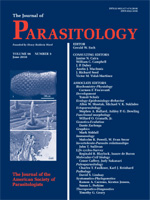These are the first paleoparasitological results from the Late Holocene in Patagonian coprolites. Coprolites collected from layers dated at 3,480 and 2,740 yr before present (B.P.), from the archaeological site Cerro Casa de Piedra, were examined. The site is a hill located in a forest steppe ecotone in Perito Moreno National Park. The coprolites could belong to humans or to other carnivores such as canids. After rehydration and spontaneous sedimentation of the samples, the parasite contents were examined. Results obtained showed the common presence of eggs of a Calodium sp., eggs of other capillariids and trichostrongylids, oocysts of Eimeria macusaniensis (Apicomplexa), and eggs of taeniids (Cestoda). Although the generic identification of some parasites could not be provided, the presence of tapeworm eggs represents the first record for the Late Holocene in Patagonia and shows that parasitism by cestodes existed in the region in pre-Columbian times. Results indicate that in the Late Patagonic Holocene, zoonotic helminths may have been commonly present in the inhabitants of Patagonia. The parasites found in the coprolites allow us to deduce what these people were eating and, thus, indicate what other pathogens, such as viruses, bacteria, and parasitic protozoans, may have infected them via the same sources.
How to translate text using browser tools
1 June 2010
First Paleoparasitological Results From Late Holocene in Patagonian Coprolites
M. O. Beltrame,
M. H. Fugassa,
N. H. Sardella
ACCESS THE FULL ARTICLE

Journal of Parasitology
Vol. 96 • No. 3
June 2010
Vol. 96 • No. 3
June 2010




